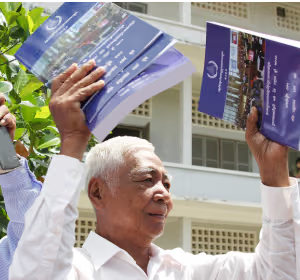
April 17, 2025 marks fifty years since the start of the genocide by the Khmer Rouge, representing the darkest 3 years, 8 months and 20 days in Cambodian history. Fifty years ago, many survivors of the genocide are still alive today, and their testimonies continue to remind us of the reality and scale of the crimes perpetrated. What about now?
Le 17 avril 2025 marque les cinquante ans du début du génocide perpétré par les Khmers rouges représentant les 3 ans 8 mois et 20 jours les plus sombres de l’histoire du Cambodge. Cinquante ans c’était hier, nombre de survivants du génocide sont encore en vie aujourd’hui, et leurs témoignages continuent de rappeler la réalité et l’ampleur des crimes perpétrés. Et maintenant, qu’en est-il ?


